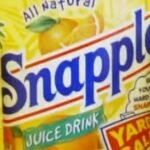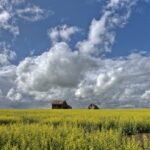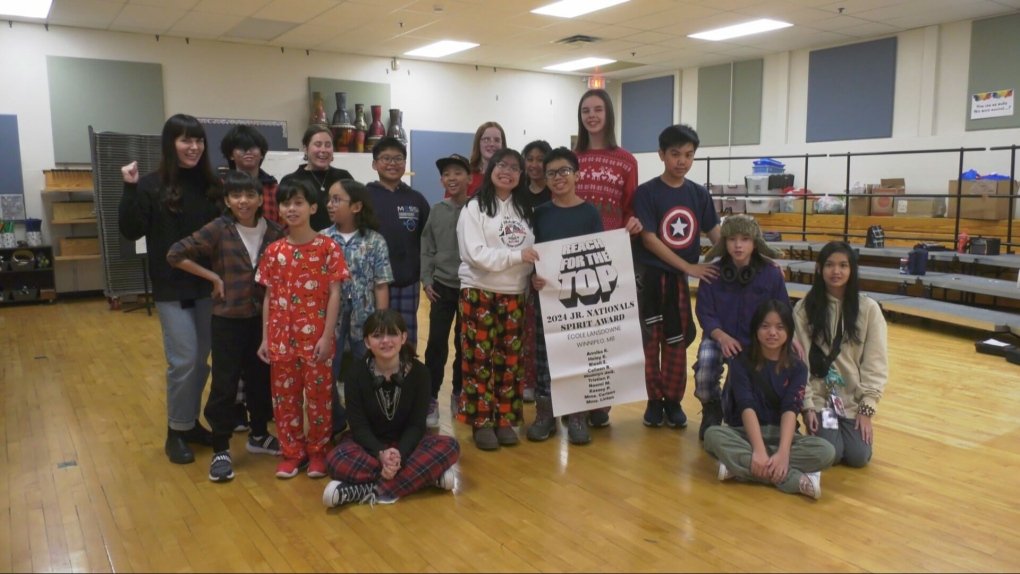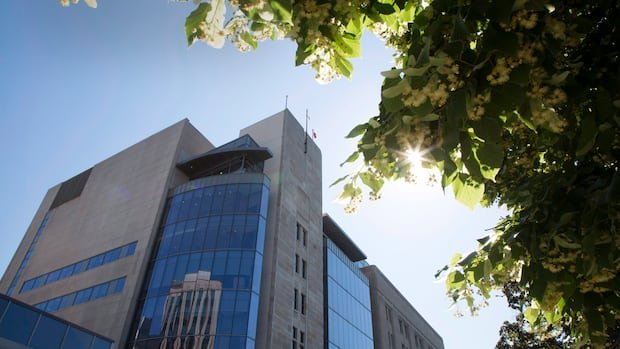Which creation of the toy company Mattel celebrated its 60th anniversary in 2019?
Not sure? Ask the students on École Lansdowne School’s Reach for the Top team. They will be able to tell you, the answer is Barbie.
It’s lunchtime at the Winnipeg school and a group of about 20 students is crowding into the music room. After lunch, they divided into two teams and got to work.
“What botanical technique consists of joining one part of a plant with another?” a student asks as three or four hands go up in the air.
“Graft,” responds another with a small applause from his companions.
Students from École Lansdowne School’s Reach for the Top team put their trivia skills to the test in Winnipeg in December 2024. (Danton Unger/CTV News Winnipeg)
“It’s fun because you get to work with your classmates in a way that you don’t get to do much,” said Annika, an eighth-grader on the team. “It’s a lot more fun facts and trivia than things you’d study in class.”
These students meet every Friday during lunch to improve their trivia skills in hopes of competing in the 2025 Reach for the Top Junior Nationals.
“They are learning a lot and already know a lot. It’s crazy,” said Amy Carlson, a teacher at École Lansdowne and co-coach of the school’s Reach team. “It’s really impressive to see their knowledge grow.”
For almost 60 years, the national Reach for the Top competition has tested the ingenuity of Canadian students. In 2024, students from about 500 schools across the country participated in the contest.
“I’m always amazed to see the students and their passion for the game, and it’s their great competition,” national anchor Ryan Vickers told CTV News.
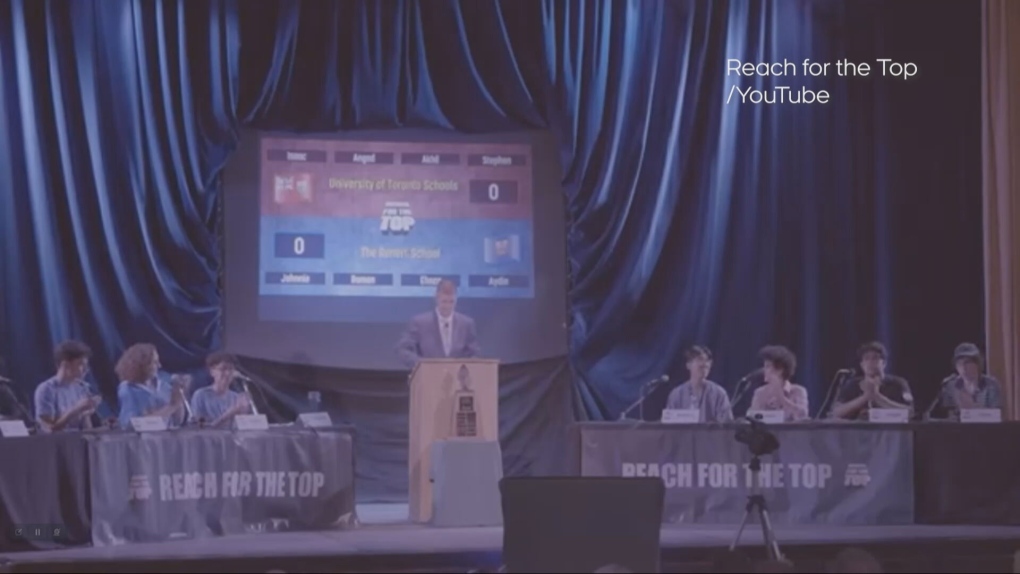 Two high school teams are seen competing in the 2024 Reach for the Top National Championship. (Reach the Top/YouTube)
Two high school teams are seen competing in the 2024 Reach for the Top National Championship. (Reach the Top/YouTube)
Vickers describes it as a kind of high school version of Jeopardy!.
“It’s as simple as pressing the bell. “If you get the answer right, you get points,” he said.
It may be simple, but it is definitely not easy.
For example, do you know what synthetic polymer toothbrush bristles are typically made of? Well, you would have to if you wanted a chance to win the national Reach for the Top trophy.
The answer, by the way, is nylon.
The challenge has hooked Canadian students on the game since 1966.
Reach for the Top began as a game show broadcast on CBC with a familiar face at the helm. The late Alex Trebek hosted Reach until the early ’70s before moving on to host another game show.
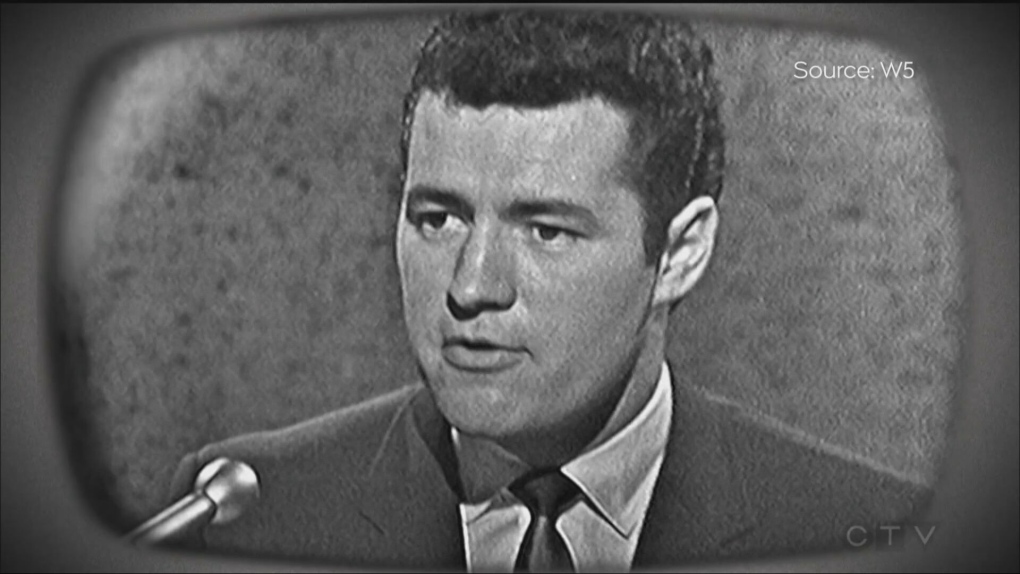 Pictured is a young Alex Trebek performing Reach for the Top in the late 1960s. (W5)
Pictured is a young Alex Trebek performing Reach for the Top in the late 1960s. (W5)
The beloved Danger! The anchor spoke with CTV News’ W5 in 2015.
“You’re looking at the future of your country,” Trebek said, recalling his time hosting Reach for the Top. “If children are bright, friendly and fun, you feel better about the future of your nation.”
Take, for example, two of those bright, affable students who became Canadian prime ministers: Kim Campbell and Stephen Harper.
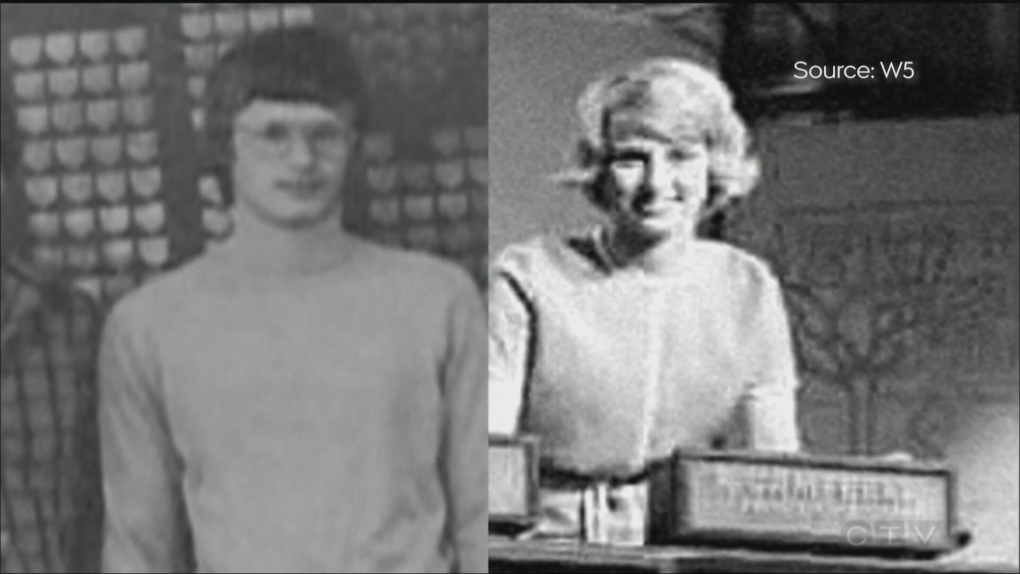 Stephen Harper (left) and Kim Campbell (right) are pictured as students. They both competed on Reach for the Top and became Canadian Prime Ministers. (W5)
Stephen Harper (left) and Kim Campbell (right) are pictured as students. They both competed on Reach for the Top and became Canadian Prime Ministers. (W5)
Here in Manitoba, it’s been 40 years since a local team took home the trophy. But for Grant Bell, the memory is still fresh in his mind.
“We were very happy,” Bell told CTV News.
It was 1984 when Bell and three other students from Deloraine Collegiate in the small rural Manitoba town of Deloraine found themselves in a battle for the national title.
Bell was only 17 years old but he still remembers the winning question.
“Between. The question was, ‘What plant is tapioca made from?'” Bell said.
Bell gave the correct answer (we’ll let you try to guess what the answer is) and with it, solidified Deloraine Collegiate as the Reach for the Top national champion.
 Deloraine Collegiate students won the 1984 Reach for the Top national championship, the last time a Manitoba team took home the trophy. (Scott Day)
Deloraine Collegiate students won the 1984 Reach for the Top national championship, the last time a Manitoba team took home the trophy. (Scott Day)
The following year, CBC canceled the game show, but it was able to continue in various forms throughout the following decades.
Bell earned a degree in computer engineering and spent 35 years in this field, carrying with him the lessons he learned all those years ago.
“I think what I learned from Reach for the Top is that you have to be prepared and willing to absorb information, collect information from wherever you can,” he said in an interview from his home in Calgary. “You kind of learn to learn.”
And that’s exactly what the École Lansdowne team is doing now. This is only the second year Lansdowne has had a Reach for the Top team, however, the group has already reached the youth national levels and received a school spirit award.
“I think there’s a great sense of community at your school,” Annika said before returning to her teammates, hands stretched high, eager to answer the latest trivia question posed to her.
And for those who don’t know what Bell’s winning answer was, it’s cassava.


